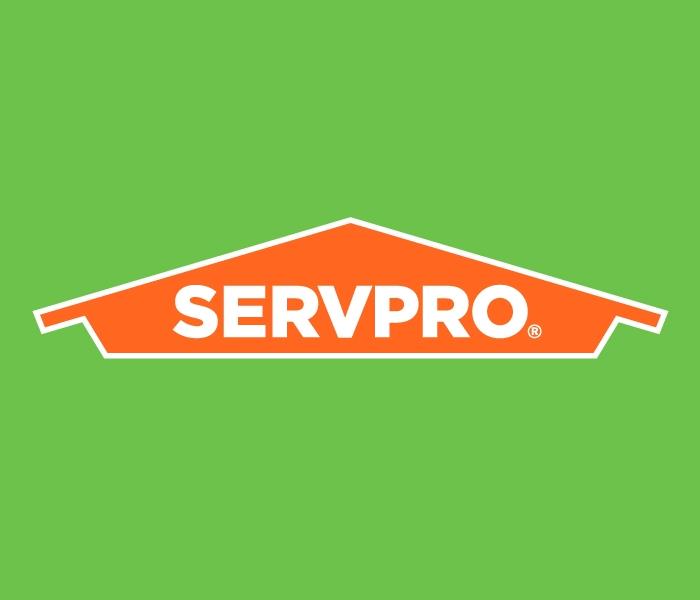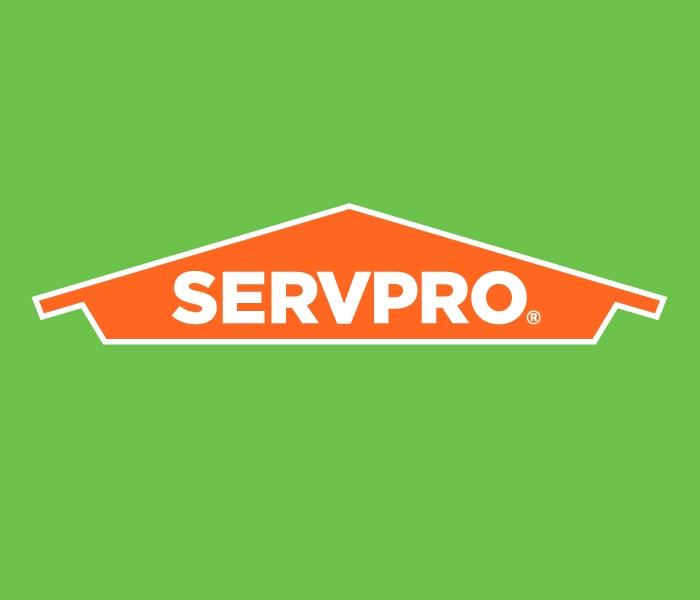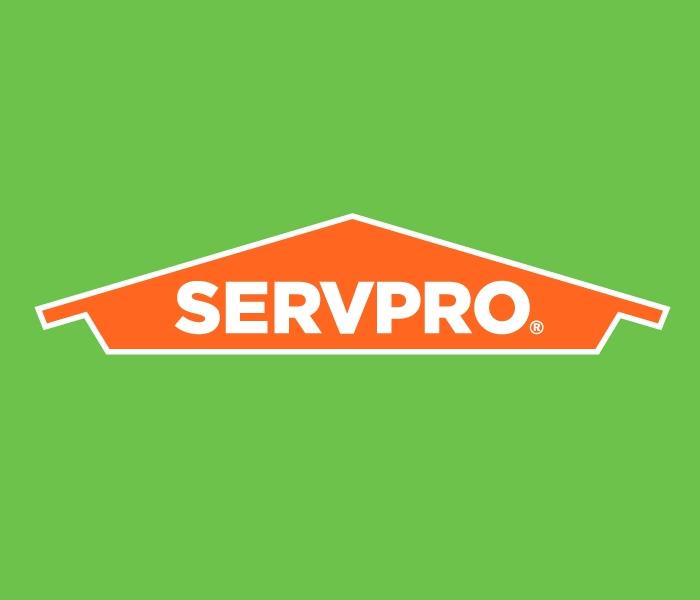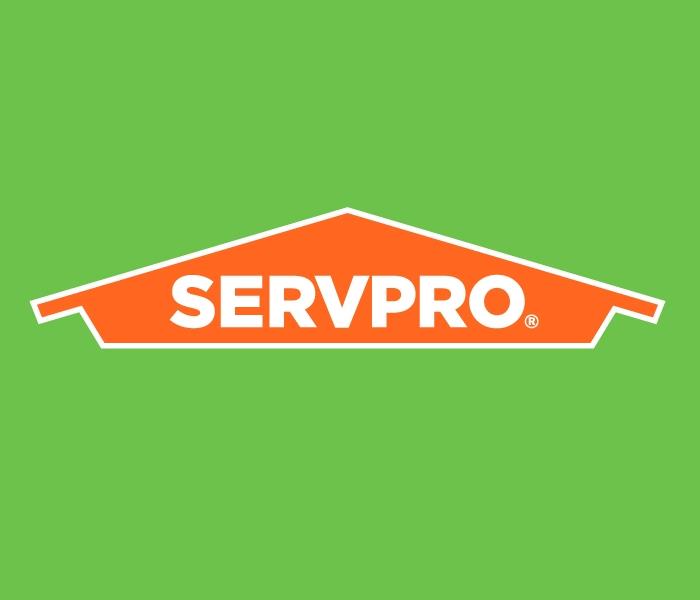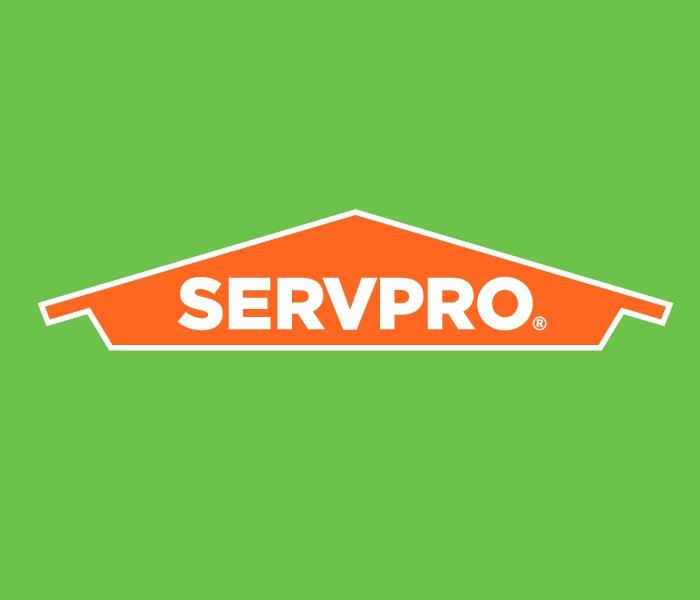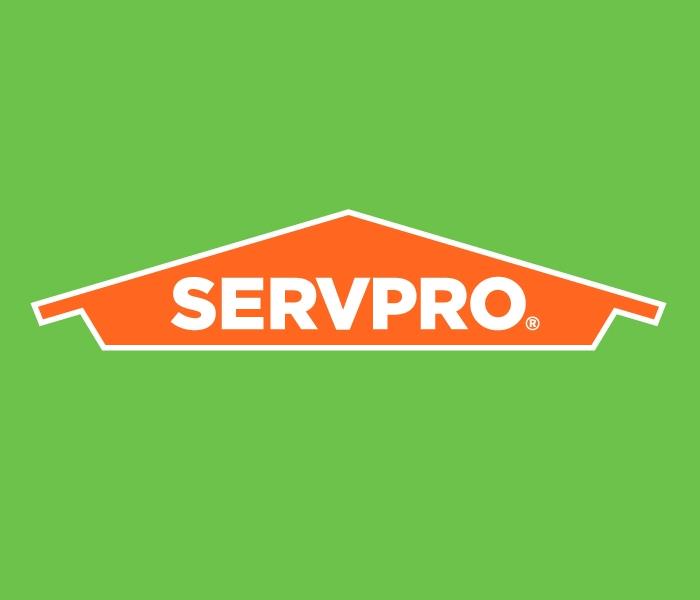Recent Posts
SERVPRO®: Restoring Peace of Mind with Expert Services
1/4/2025 (Permalink)
When disaster strikes, restoring your home or business can feel overwhelming. That’s where SERVPRO steps in—providing professional restoration services that bring your space back to normal, fast and efficiently. Whether you’re dealing with water damage, fire damage, mold, or the need for professional cleaning, SERVPRO offers tailored solutions to meet your needs.
The SERVPRO Difference
SERVPRO is committed to excellence, combining industry-leading technology, highly trained professionals, and years of experience. From minor incidents to large-scale disasters, SERVPRO has the expertise to handle any restoration project with care and precision.
Comprehensive Services
SERVPRO offers a wide range of services to address various restoration needs:
•Water Damage Restoration: From burst pipes to storm flooding, SERVPRO quickly removes water and dries your property to prevent further damage.
•Fire and Smoke Damage Cleanup: SERVPRO restores fire-damaged homes and businesses by addressing soot, odors, and structural issues.
•Mold Remediation: Mold can silently invade your property. SERVPRO ensures mold is effectively removed and helps prevent future growth.
•Storm Damage Recovery: When severe weather leaves your property damaged, SERVPRO provides emergency response and full-scale restoration.
•Specialty Cleaning Services: SERVPRO offers solutions for carpets, upholstery, air ducts, and biohazard cleanup.
Why Choose SERVPRO?
•24/7 Emergency Response: Disasters don’t wait, and neither does SERVPRO. The team is available around the clock to address your concerns.
•Trained Technicians: Each technician undergoes extensive training and is certified to deliver the best restoration and cleaning services.
•Advanced Equipment: SERVPRO uses state-of-the-art tools to ensure efficiency and thoroughness in every project.
•Customer-Centered Approach: Your satisfaction is the top priority. SERVPRO works closely with you and your insurance provider to streamline the process.
Restoring Homes, Businesses, and Lives
SERVPRO understands that restoration isn’t just about repairing structures—it’s about restoring peace of mind. Every project is handled with the utmost care to ensure a smooth recovery process.
If disaster has disrupted your life, don’t wait. Call SERVPRO today to learn how their expert team can make it “Like it never even happened.”
SERVPRO®: Comprehensive Restoration and Cleaning Experts
12/31/2024 (Permalink)
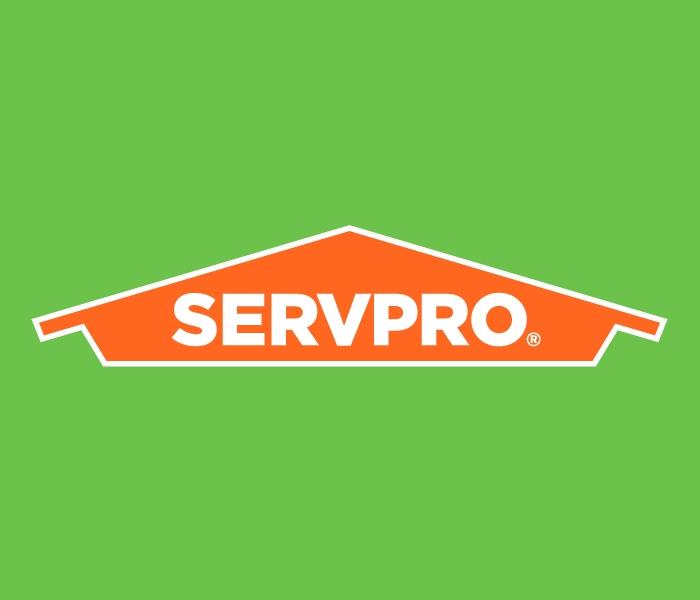
When disaster strikes, having a reliable partner by your side makes all the difference. SERVPRO® stands out as a trusted name in restoration and cleaning, offering swift and professional services to help homes and businesses recover from unexpected challenges. With advanced tools, certified technicians, and a customer-first approach, SERVPRO is your go-to resource for turning setbacks into solutions.
Tailored Services for Every Need
SERVPRO understands that every situation is unique, which is why they provide a wide range of services, each customized to meet the specific needs of your property.
Water Damage Restoration: Burst pipes, storms, or appliance leaks can cause severe water damage. SERVPRO uses cutting-edge drying equipment and proven techniques to mitigate damage and restore your space quickly.
Fire and Smoke Damage Repair: After a fire, the lingering effects of soot, odor, and structural damage can be overwhelming. SERVPRO’s fire restoration experts ensure thorough cleaning, deodorization, and rebuilding to bring your property back to life.
Mold Remediation: Mold thrives in damp conditions and can spread rapidly if left unchecked. SERVPRO’s mold remediation specialists remove mold safely and help address the source of moisture to prevent future growth.
Storm Damage Response: Severe weather can leave properties in disarray. SERVPRO offers comprehensive storm damage recovery, from debris removal to structural repairs.
Specialty Cleaning Services: Whether you need biohazard cleanup, air duct cleaning, or routine commercial maintenance, SERVPRO provides meticulous cleaning for healthier, safer spaces.
Why Choose SERVPRO?
- Rapid Response: SERVPRO operates 24/7, ensuring prompt assistance when time is of the essence.
- Certified Technicians: All team members are trained to the highest industry standards, delivering reliable and professional results.
- Cutting-Edge Technology: SERVPRO utilizes advanced equipment to ensure thorough and efficient restoration and cleaning.
- Insurance Collaboration: Navigating insurance claims can be daunting. SERVPRO works closely with insurance providers to simplify the process for you.
A Commitment to Your Peace of Mind
Beyond technical expertise, SERVPRO is dedicated to customer satisfaction. Their compassionate team understands the emotional toll of unexpected damage and works tirelessly to restore not just properties, but the confidence of homeowners and business owners alike.
For a partner you can rely on in your time of need, turn to SERVPRO. Contact them today to learn more about their restoration and cleaning solutions or to schedule an assessment.
SERVPRO®: Reliable Restoration Solutions When You Need Them Most
12/29/2024 (Permalink)
Life is unpredictable, and when disasters strike, they often leave behind extensive damage that can feel overwhelming. Whether it’s a fire, flood, storm, or mold infestation, addressing the aftermath quickly and effectively is crucial. SERVPRO is your trusted partner in restoration, providing comprehensive services designed to bring your property back to its pre-damage condition with professionalism and care.
Comprehensive Restoration Services
SERVPRO offers a wide range of restoration and cleanup services tailored to meet the unique needs of homeowners and businesses alike:
Water Damage Restoration: From burst pipes to flooding, SERVPRO responds swiftly to mitigate water damage. Using advanced drying equipment and techniques, they ensure moisture is thoroughly removed to prevent long-term issues like mold growth.
Fire Damage Restoration: SERVPRO specializes in cleaning soot, smoke, and fire damage. Their team restores your property and belongings with a meticulous approach, helping you recover quickly and efficiently.
Mold Remediation: Mold can spread quickly and compromise both health and structural integrity. SERVPRO’s certified professionals eliminate mold and address underlying moisture issues to ensure it doesn’t return.
Storm Damage Cleanup: Severe weather can cause significant damage in an instant. SERVPRO is equipped to handle debris removal, water extraction, and structural repairs, restoring safety and normalcy to your property.
Why Choose SERVPRO?
When disaster strikes, choosing a reliable restoration company makes all the difference. SERVPRO stands out for several reasons:
24/7 Emergency Response: Disasters don’t follow a schedule, and neither does SERVPRO. Their teams are available around the clock to respond when you need help most.
Highly Trained Technicians: SERVPRO’s technicians are certified experts with the knowledge and tools to handle restoration projects of any size or complexity.
Advanced Technology: From industrial-grade dehumidifiers to state-of-the-art air scrubbers, SERVPRO uses cutting-edge equipment to deliver efficient and effective results.
Insurance Coordination: Dealing with insurance claims can be stressful. SERVPRO® works directly with your insurance provider, streamlining the process and minimizing hassle for you.
The SERVPRO Process
Each restoration project follows a detailed process to ensure thorough results:
Assessment: SERVPRO begins with a comprehensive inspection to determine the extent of the damage and develop a tailored restoration plan.
Mitigation: The team takes immediate steps to stop further damage, such as boarding up windows, extracting water, or containing affected areas.
Cleaning and Repair: Using specialized techniques, SERVPRO cleans, sanitizes, and restores damaged areas while repairing or replacing compromised materials.
Restoration: The final step is restoring your property to its pre-damage condition, ensuring it feels like home again.
Peace of Mind in Challenging Times
SERVPRO is more than a restoration company—they are a partner you can rely on during some of life’s most challenging moments. With a commitment to excellence, a focus on customer care, and a track record of success, SERVPRO ensures that you don’t have to face disaster recovery alone.
When disaster strikes, trust SERVPRO to restore your property and peace of mind. Contact your local SERVPRO team today to learn more about their comprehensive restoration services.
Why Choose SERVPRO® for Your Property Restoration Needs?
12/25/2024 (Permalink)
Life is unpredictable, and when disasters strike, it’s crucial to have a trusted partner to help you get back on your feet. SERVPRO is your go-to solution for comprehensive restoration and cleaning services. From fire and water damage to mold remediation and routine cleaning, SERVPRO has the expertise and tools to restore your property quickly and efficiently.
Comprehensive Restoration Services
SERVPRO offers a wide range of restoration services to address any challenge:
- Fire and Smoke Damage Restoration: Removing soot, repairing structural damage, and restoring affected areas with care.
- Water Damage Restoration: From floods to leaks, SERVPRO dries, cleans, and restores your space to pre-damage conditions.
- Mold Remediation: Tackling mold at the source to keep your home safe and clean.
Advanced Cleaning Solutions
Beyond emergencies, SERVPRO also provides routine and deep-cleaning services for residential and commercial spaces. This includes carpet cleaning, air duct maintenance, and biohazard cleanup, ensuring a healthy environment year-round.
Why SERVPRO Stands Out
- Fast Response: With 24/7 availability, SERVPRO minimizes downtime and accelerates recovery.
- Expert Technicians: Certified professionals use industry-leading techniques and equipment to handle every project.
- Tailored Solutions: Each service is customized to meet your specific needs.
When life throws the unexpected your way, trust SERVPRO to be there. With unmatched expertise and a commitment to excellence, SERVPRO ensures your property is restored with care and precision.
Contact SERVPRO today to learn more about our services and experience the difference we can make for your home or business.
Restoring Confidence: SERVPRO®'s Comprehensive Approach to Damage Recovery
12/25/2024 (Permalink)
Life is unpredictable. Whether it's a burst pipe, a fire, or an unexpected storm, challenges can arise at any moment. That’s where SERVPRO comes in—a trusted leader in the cleanup and restoration industry, committed to helping you recover quickly and efficiently.
Comprehensive Restoration Services
SERVPRO offers an extensive array of services to handle virtually any cleaning or restoration challenge, including:
Water Damage Restoration: From minor leaks to major floods, SERVPRO addresses water damage with expert precision, ensuring your property is thoroughly dried and restored.
Fire Damage Cleanup: Dealing with fire damage goes beyond removing charred materials. SERVPRO handles soot cleanup, odor removal, and structural repairs to bring your space back to life.
Storm Damage Recovery: Storms can wreak havoc on homes and businesses. SERVPRO provides fast and effective solutions, from board-ups to complete repairs.
Mold Remediation: Mold can compromise both your property and your health. SERVPRO’s trained professionals eliminate mold and prevent its return by addressing the root cause—moisture.
Specialty Cleaning: Whether it’s biohazard cleanup or duct cleaning, SERVPRO uses advanced techniques and equipment to ensure thorough results.
Why SERVPRO Stands Out
Rapid Response: Emergencies don’t follow a schedule, and neither does SERVPRO. Available 24/7, their team ensures immediate action to minimize damage and restore normalcy.
Expertise You Can Trust: With IICRC-certified technicians, SERVPRO employs industry-leading practices and advanced technology to deliver high-quality results.
End-to-End Support: SERVPRO manages every aspect of the restoration process, from the initial assessment to the final repairs, giving you peace of mind during a stressful time.
Insurance Assistance: Navigating insurance claims can be daunting. SERVPRO works closely with your provider to streamline the process and reduce your burden.
Commitment to Excellence
SERVPRO is more than just a service provider—it’s a partner dedicated to restoring your property and your peace of mind. Their customer-first approach and commitment to community make SERVPRO a trusted name in the industry.
When disaster strikes, don’t face it alone. Call SERVPRO for expert cleanup, restoration, and support you can rely on.Life is unpredictable. Whether it's a burst pipe, a fire, or an unexpected storm, challenges can arise at any moment. That’s where SERVPRO® comes in—a trusted leader in the cleanup and restoration industry, committed to helping you recover quickly and efficiently.
Comprehensive Restoration Services
SERVPRO offers an extensive array of services to handle virtually any cleaning or restoration challenge, including:
Water Damage Restoration: From minor leaks to major floods, SERVPRO addresses water damage with expert precision, ensuring your property is thoroughly dried and restored.
Fire Damage Cleanup: Dealing with fire damage goes beyond removing charred materials. SERVPRO handles soot cleanup, odor removal, and structural repairs to bring your space back to life.
Storm Damage Recovery: Storms can wreak havoc on homes and businesses. SERVPRO provides fast and effective solutions, from board-ups to complete repairs.
Mold Remediation: Mold can compromise both your property and your health. SERVPRO’s trained professionals eliminate mold and prevent its return by addressing the root cause—moisture.
Specialty Cleaning: Whether it’s biohazard cleanup or duct cleaning, SERVPRO uses advanced techniques and equipment to ensure thorough results.
Why SERVPRO Stands Out
Rapid Response: Emergencies don’t follow a schedule, and neither does SERVPRO. Available 24/7, their team ensures immediate action to minimize damage and restore normalcy.
Expertise You Can Trust: With IICRC-certified technicians, SERVPRO employs industry-leading practices and advanced technology to deliver high-quality results.
End-to-End Support: SERVPRO manages every aspect of the restoration process, from the initial assessment to the final repairs, giving you peace of mind during a stressful time.
Insurance Assistance: Navigating insurance claims can be daunting. SERVPRO works closely with your provider to streamline the process and reduce your burden.
Commitment to Excellence
SERVPRO is more than just a service provider—it’s a partner dedicated to restoring your property and your peace of mind. Their customer-first approach and commitment to community make SERVPRO a trusted name in the industry.
When disaster strikes, don’t face it alone. Call SERVPRO for expert cleanup, restoration, and support you can rely on.
SERVPRO®: Your Trusted Partner for Restoration and Recovery
12/15/2024 (Permalink)
Disasters can strike when you least expect them—whether it’s water damage from a burst pipe, fire devastation, or an unforeseen storm. SERVPRO is here to ensure that your property is restored quickly and efficiently. With decades of experience and industry-leading expertise, SERVPRO has become a trusted partner for homes and businesses across the nation.
Why Choose SERVPRO?
• Fast Response: Time is critical when disaster strikes. SERVPRO professionals are ready 24/7 to minimize damage and begin the restoration process.
• Comprehensive Services: From water and fire damage restoration to mold remediation and cleaning services, SERVPRO handles it all.
• Advanced Equipment: Using state-of-the-art technology, SERVPRO ensures the job is done thoroughly and efficiently.
Our Process
When you contact SERVPRO, our team immediately springs into action. After assessing the damage, we create a tailored plan to restore your property to preloss condition. From removing debris and drying water-logged areas to deodorizing smoke-damaged homes, our professionals provide seamless, high-quality solutions.
Ready for Any Size Disaster
No job is too big or too small for SERVPRO. Whether it’s a small leak in a home or a large-scale commercial restoration project, our highly trained technicians are equipped to get the job done.
Trust SERVPRO to Make It “Like it never even happened.”
When the unexpected happens, SERVPRO is the name you can trust to restore your peace of mind. Contact us today to learn more about how we can help.
SERVPRO®: Your Partner in Fire Damage Restoration
12/14/2024 (Permalink)
Experiencing a fire can be devastating, leaving behind physical damage, emotional stress, and uncertainty about what comes next. SERVPRO is here to guide you through the fire damage restoration process, helping you rebuild and restore your home or business with care and expertise.
Understanding Fire Damage
Fire damage isn’t limited to the areas touched by flames. Smoke, soot, and water from firefighting efforts can permeate walls, furniture, and belongings, leading to further damage if not addressed quickly. Immediate and professional restoration is crucial to prevent long-term issues like structural instability, odors, and staining.
SERVPRO’s Comprehensive Fire Damage Restoration Process
1. Emergency Response and Inspection
SERVPRO’s team is available 24/7 to respond to your call. Upon arrival, we assess the extent of the damage, identifying areas affected by fire, smoke, soot, and water. This detailed evaluation allows us to create a tailored restoration plan.
2. Board-Up and Tarping Services
To protect your property from weather elements or unauthorized access, SERVPRO provides emergency board-up and tarping services. This step ensures your home or business remains secure during the restoration process.
3. Water Removal and Drying
If water was used to extinguish the fire, SERVPRO removes standing water and uses industrial-grade dehumidifiers and air movers to dry affected areas thoroughly, preventing mold and secondary damage.
4. Smoke and Soot Removal
Smoke and soot can cling to surfaces and penetrate deeply into materials. Using advanced cleaning methods and equipment, SERVPRO removes residues from walls, ceilings, and belongings, restoring them to pre-fire condition wherever possible.
5. Odor Neutralization
SERVPRO employs specialized equipment like ozone generators and thermal foggers to eliminate lingering smoke odors, ensuring your space smells fresh and clean.
6. Cleaning and Sanitization
From furniture to electronics, SERVPRO carefully cleans and sanitizes your belongings using specialized techniques. Items that are irreparable are documented for insurance purposes.
7. Restoration and Repairs
Once the cleaning and mitigation steps are complete, SERVPRO handles the final restoration, which may include drywall replacement, painting, and rebuilding damaged structures. Our goal is to return your property to its pre-fire condition quickly and efficiently.
Why Choose SERVPRO?
• Rapid Response: Time is critical after a fire. SERVPRO responds promptly to minimize damage and accelerate recovery.
• Certified Expertise: Our technicians are trained and certified in fire and smoke restoration techniques.
• Advanced Equipment: SERVPRO uses industry-leading tools and cleaning methods to ensure comprehensive restoration.
• Insurance Assistance: We work directly with your insurance company, helping you navigate the claims process with ease.
• Comprehensive Services: From initial cleanup to full reconstruction, SERVPRO manages every aspect of your restoration.
Don’t let fire damage disrupt your life longer than necessary. With SERVPRO’s expertise and commitment to quality, you can trust that your property is in good hands.
Call SERVPRO Today
If you’ve experienced a fire, contact SERVPRO for a professional assessment and tailored restoration plan. We’re here to help you every step of the way.
FAQs
Q: How long does fire damage restoration take?
A: The timeline depends on the extent of the damage. SERVPRO provides a detailed estimate and timeline after the initial inspection.
Q: Can SERVPRO save belongings damaged by smoke?
A: Yes, SERVPRO uses specialized techniques and equipment to clean and restore many smoke-damaged items.
Q: Will SERVPRO help with my insurance claim?
A: Absolutely. SERVPRO provides detailed documentation of the damage and works directly with your insurance company to simplify the claims process.
SERVPRO®: Elevating Restoration and Cleaning Standards
12/6/2024 (Permalink)
When disaster strikes or a deep-clean is overdue, choosing the right service provider is crucial. SERVPRO stands out as a leader in restoration and cleaning services, combining innovation, expertise, and a commitment to customer satisfaction. Whether it’s water damage, fire recovery, or routine cleaning, SERVPRO transforms challenges into opportunities for renewal.
Beyond Ordinary Restoration
SERVPRO doesn’t just repair damage; we restore peace of mind.
Water Damage Solutions
Burst pipes, leaking roofs, or unexpected flooding can wreak havoc on a property. SERVPRO’s team responds quickly, using state-of-the-art equipment to extract water, dry affected areas, and restore your space to pre-damage condition.
Fire Recovery with Precision
Fire damage often extends beyond what’s visible. SERVPRO tackles soot, smoke odor, and structural issues, ensuring your property is safe, clean, and comfortable once more.
Mold Mitigation Experts
Mold can disrupt daily life and compromise your property’s integrity. SERVPRO identifies the source of mold growth, eliminates it, and provides guidance to prevent future occurrences.
Storm Recovery Assistance
When storms leave debris and destruction, SERVPRO steps in with swift cleanup and restoration services to get your property back on track.
Redefining Cleaning Services
SERVPRO offers cleaning solutions that go beyond the surface:
- Specialty Cleaning: Restore carpets, upholstery, and drapes to their original freshness.
- Duct Cleaning: Breathe easier with cleaner air ducts that enhance indoor air quality.
- Odor Elimination: Say goodbye to stubborn smells with SERVPRO’s advanced deodorization methods.
- Biohazard Cleanup: Whether it's hazardous spills or sensitive trauma situations, SERVPRO ensures safe and thorough cleaning.
Why SERVPRO?
- Expert Team: With certified professionals trained in the latest techniques, SERVPRO delivers exceptional results.
- Advanced Technology: From industrial-grade dryers to powerful air scrubbers, SERVPRO uses cutting-edge equipment to handle even the toughest challenges.
- 24/7 Readiness: Emergencies don’t wait, and neither does SERVPRO. Our team is available around the clock to provide assistance when it matters most.
- Customer-Centric Approach: SERVPRO prioritizes clear communication and transparency, ensuring you’re informed at every step of the process.
The SERVPRO Promise
SERVPRO is more than a service provider; we’re a partner in restoration and care. From the first call to the final inspection, our focus is on delivering quality results and exceeding expectations.
Ready to Restore or Revitalize Your Space?
SERVPRO is just a call away. Whether it’s recovering from a disaster or scheduling a proactive cleaning, let SERVPRO provide the expertise and care you deserve.
Q&A
Q: Can SERVPRO handle large-scale commercial projects?
A: Yes, SERVPRO has the resources and expertise to manage restoration and cleaning for both small residences and expansive commercial properties.
Q: How does SERVPRO ensure long-term mold prevention?
A: SERVPRO not only removes mold but also identifies and addresses moisture sources to reduce the chances of recurrence.
Q: Are SERVPRO’s cleaning services customizable?
A: Absolutely! SERVPRO works with you to create a cleaning plan tailored to your specific needs and schedule.
Trust SERVPRO to make your property feel like home again—clean, safe, and worry-free.
When Storms Strike, SERVPRO® Responds
12/6/2024 (Permalink)
Storms can leave behind chaos, disrupting lives and damaging homes or businesses in an instant. Whether it’s heavy rains causing flooding, fierce winds tearing apart roofs, or debris wreaking havoc on properties, the aftermath of a storm requires swift and professional intervention. SERVPRO is Here to Help® you recover quickly, restoring your property and peace of mind with comprehensive storm damage services.
The Impact of Storm Damage
Storms don’t just create immediate physical damage; they can lead to long-term issues if not addressed promptly. Water damage from flooding or leaks can cause structural problems and promote mold growth. Wind and debris can weaken your building’s integrity, leaving it vulnerable to further damage. The professionals at SERVPRO understand the urgency of storm recovery and are equipped to handle every challenge.
Why Choose SERVPRO for Storm Damage Restoration?
- Rapid Response: Time is critical after a storm. SERVPRO teams are available 24/7 to respond quickly and minimize damage.
- Comprehensive Services: From water extraction and structural drying to roof repairs and debris cleanup, SERVPRO provides a full range of restoration solutions.
- Expert Technicians: Our highly trained specialists use advanced equipment and techniques to ensure thorough restoration.
- Insurance Support: We work closely with your insurance company, providing detailed documentation to make the claims process seamless.
SERVPRO’s Storm Damage Restoration Process
Assessment and Inspection
Our team conducts a detailed inspection to determine the extent of the damage. We develop a customized restoration plan to address all areas of concern.
Immediate Mitigation
To prevent further damage, SERVPRO secures your property by tarping roofs, boarding up windows, and addressing any safety hazards.
Water Removal and Drying
If flooding or leaks have occurred, we use powerful pumps and industrial-grade dehumidifiers to remove water and thoroughly dry affected areas.
Cleaning and Sanitization
We clean, disinfect, and deodorize your property to eliminate contaminants and odors caused by stormwater or debris.
Restoration and Repairs
SERVPRO restores your property to its pre-storm condition, whether it’s repairing walls, replacing flooring, or rebuilding entire sections of your home or business.
Preparing for the Next Storm
While SERVPRO is here to help after a storm, proactive measures can reduce potential damage:
- Keep gutters and drains clear to prevent flooding.
- Secure outdoor furniture, equipment, or loose items before a storm.
- Inspect your roof regularly for signs of wear and tear.
- Have a disaster plan in place, including emergency contacts like SERVPRO.
Trust SERVPRO for Storm Recovery
When nature’s fury disrupts your life, SERVPRO is your partner in recovery. Our dedicated teams bring expertise, empathy, and efficiency to every storm damage project, helping you rebuild and move forward with confidence.
Call SERVPRO today for expert storm damage restoration. We’re ready 24/7 to respond and restore.
Q&A
Q: How quickly can SERVPRO respond after a storm?
A: SERVPRO is available 24/7 and can mobilize teams quickly to assess and address storm damage.
Q: Does SERVPRO handle large-scale disasters?
A: Yes, SERVPRO is equipped to handle storm damage for residential, commercial, and industrial properties, including large-scale events.
Q: Will SERVPRO help with my insurance claim?
A: Absolutely. SERVPRO works closely with insurance providers, offering documentation and support to simplify the claims process.
When storms strike, trust SERVPRO to bring your property back to life.
SERVPRO®: Comprehensive Storm Damage Restoration
12/6/2024 (Permalink)
Storms can strike without warning, causing significant damage to both residential and commercial properties. Whether it’s wind, hail, heavy rains, or flooding, storms have the potential to disrupt your life and cause costly damage. That’s where SERVPRO comes in, offering expert storm damage restoration services designed to return your property to its original condition.
Understanding the Impact of Storm Damage
Severe weather events can lead to various forms of damage. From roof damage to flooding, your property can experience structural problems and water damage. Wind can blow off shingles, broken windows, and down trees, while excessive rain and flooding can saturate the foundation, leading to long-term issues like mold growth. The quicker you address the damage, the less chance there is of further deterioration.
SERVPRO's Storm Damage Restoration Process
At SERVPRO, we understand that each storm is different, which is why we approach each restoration project with care and precision. Our highly-trained technicians follow a step-by-step process to restore your property as quickly and efficiently as possible.
Initial Inspection and Assessment The first step is a thorough inspection of the affected area. Our team will evaluate the full extent of the damage to determine the best course of action for cleanup and restoration.
Boarding Up and Tarping Roofs To prevent additional damage, we provide emergency services like boarding up windows, doors, and tarping roofs to secure your property from further exposure to the elements.
Water Extraction and Drying Excess water from flooding or rain is extracted using specialized equipment. We then use high-powered dehumidifiers and air movers to dry out the property and prevent mold growth.
Cleaning and Sanitizing Our technicians clean and sanitize surfaces to remove contaminants brought in by the storm, ensuring your property is safe and healthy once restored.
Repairs and Restoration The final step in the restoration process is the repair and restoration of structural elements, from drywall to flooring, so your property looks like new again.
Why Choose SERVPRO for Storm Damage Restoration?
- 24/7 Availability: We understand that storm damage can happen at any time, so we’re available 24/7 to handle emergencies and respond immediately.
- Trained Professionals: Our team is IICRC-certified and has the expertise to manage every aspect of storm damage cleanup and restoration.
- Insurance Assistance: We work directly with your insurance company to help facilitate the claims process and ensure you get the support you need.
- Advanced Technology: SERVPRO uses state-of-the-art equipment and techniques to minimize damage and ensure a fast, effective restoration.
When a storm strikes, don't wait—reach out to SERVPRO for expert storm damage restoration services. We’re here to help restore your home or business to its pre-storm condition quickly and efficiently.
FAQs:
Q: How quickly can SERVPRO respond to a storm damage emergency? A: SERVPRO is available 24/7 to respond to storm damage emergencies. We’ll be there as soon as possible to begin the restoration process.
Q: Will my insurance cover storm damage restoration? A: Storm damage restoration is often covered by insurance, but coverage may vary. SERVPRO will work with your insurance company to help process your claim.
Q: How long does storm damage restoration take? A: The time required for restoration depends on the extent of the damage. SERVPRO will provide a detailed timeline after an initial inspection of the damage.





 24/7 Emergency Service
24/7 Emergency Service

